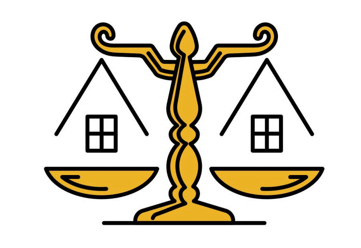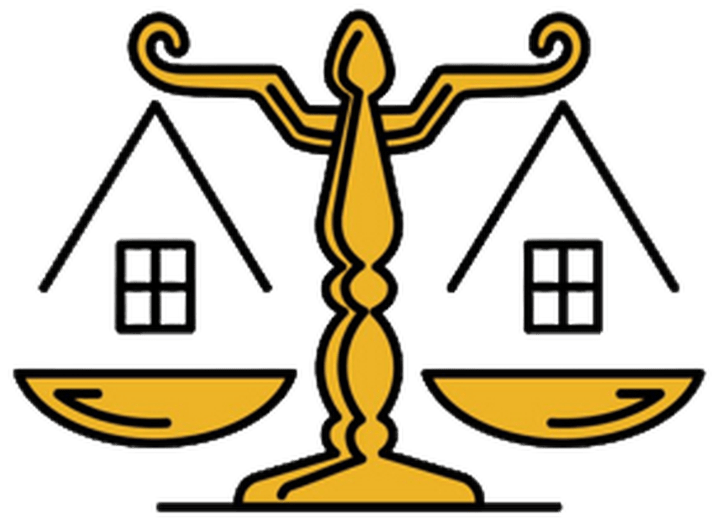
`Introduction
Understanding the 4 Critical Types of Parties to a Civil Action for a Fair Resolution
In any legal system, the structure of civil litigation is designed to ensure that disputes between individuals, businesses, or other entities are resolved fairly and justly. Central to this process are the parties involved in the civil action—those who bring claims, defend against claims, or are otherwise involved in the case. The role that each party plays in a civil case is critical in determining the course and outcome of the litigation. Understanding the types of parties to a civil action can provide insight into the dynamics of legal disputes, contributing to fair and equitable resolutions.
In this article, we will explore the **four critical types of parties** to a civil action and examine their respective roles, rights, and responsibilities within the context of civil litigation. These parties include the **plaintiff**, the **defendant**, the **third-party defendant**, and the **intervener**. By understanding the functions of these key players, we can gain a deeper appreciation for how the legal process operates and how justice is achieved.
1. The Plaintiff: Initiating the Civil Action
The **plaintiff** is the party that initiates a civil action by filing a lawsuit against one or more defendants. The plaintiff is typically the individual or entity that claims to have been harmed by the actions, omissions, or legal responsibilities of the defendant. As the initiator of the lawsuit, the plaintiff bears the burden of proving their case by presenting evidence and legal arguments to support their claims.
Role and Responsibilities of the Plaintiff
The plaintiff’s primary role in a civil action is to seek a remedy for a perceived legal wrong. This remedy could take the form of financial compensation (damages), an injunction (a court order to stop or require certain actions), or another form of relief, depending on the nature of the case.
To successfully pursue a civil claim, the plaintiff must fulfill several key responsibilities:
1. Filing a Complaint: The civil action begins when the plaintiff files a formal complaint with the court, outlining the facts of the case, the legal basis for the claim, and the specific relief sought.
2. Serving the Defendant: The plaintiff is responsible for ensuring that the defendant receives proper notice of the lawsuit. This is done by serving the defendant with a copy of the complaint and a summons, which informs them of the legal action and their obligation to respond.
3. Proving the Claim: In most civil cases, the plaintiff bears the burden of proof. This means that the plaintiff must present sufficient evidence to convince the court that the defendant is legally liable for the harm or injury claimed. The standard of proof in civil cases is typically a “preponderance of the evidence,” meaning that it is more likely than not that the defendant is responsible for the alleged harm.
4. Responding to Defenses: Throughout the litigation process, the plaintiff may need to respond to defenses raised by the defendant. This could involve providing additional evidence, filing legal motions, or amending the complaint to address new issues that arise.
Importance of the Plaintiff’s Role in Civil Justice
The plaintiff is essential to the civil justice system because they bring the legal dispute to the court’s attention. Without plaintiffs to initiate cases, legal wrongs might go unaddressed, and individuals or entities could suffer harm without a means of redress. The plaintiff’s ability to present their case and seek a fair resolution underscores the importance of access to justice in a civil society.
2. The Defendant: Responding to the Civil Action
The **defendant** is the party against whom the civil action is brought. The defendant may be an individual, a business entity, a government agency, or another organization that the plaintiff claims has caused harm or violated their legal rights. In responding to the plaintiff’s complaint, the defendant must either deny the allegations or raise legal defenses to explain why they should not be held liable.
Role and Responsibilities of the Defendant
The defendant’s role is to defend against the plaintiff’s claims, either by challenging the facts, the legal basis of the claim, or both. Some of the key responsibilities of the defendant include:
1. Filing an Answer: After being served with the plaintiff’s complaint, the defendant must file a formal response, known as an answer, within a specified period of time (often 20 to 30 days, depending on jurisdiction). In the answer, the defendant may admit or deny the allegations in the complaint and may raise affirmative defenses—arguments that, even if the plaintiff’s claims are true, the defendant should not be held liable.
2. Raising Legal Defenses: The defendant may assert legal defenses to counter the plaintiff’s claims. Common defenses include asserting that the plaintiff’s complaint is legally insufficient, that the defendant’s actions were justified or lawful, or that the statute of limitations has expired.
3. Filing Counterclaims: In some cases, the defendant may file a counterclaim against the plaintiff, alleging that the plaintiff has harmed them in some way. This allows the defendant to seek their own remedy within the same legal action.
4. Participating in Discovery: The defendant has the right to engage in the discovery process, which allows both parties to gather evidence and information relevant to the case. This may involve exchanging documents, taking depositions, and requesting answers to written questions (interrogatories).
5. Presenting a Defense at Trial: If the case proceeds to trial, the defendant has the right to present evidence and legal arguments to refute the plaintiff’s claims. This may include calling witnesses, introducing documents, and cross-examining the plaintiff’s witnesses.
Importance of the Defendant’s Role in Civil Justice
The defendant plays a critical role in ensuring a fair and balanced civil justice system. By providing a defense, the defendant helps the court consider both sides of the dispute and ensures that the plaintiff’s claims are thoroughly examined. The defendant’s right to defend themselves is a cornerstone of due process, allowing for a fair resolution of civil disputes.
3. The Third-Party Defendant: Expanding the Scope of the Civil Action
A **third-party defendant** is a party who is brought into the civil action by the original defendant. This typically occurs when the defendant believes that another party is partially or wholly responsible for the harm alleged by the plaintiff. The defendant can file a third-party complaint, effectively expanding the scope of the lawsuit to include the third-party defendant.
Role and Responsibilities of the Third-Party Defendant
The third-party defendant’s role is to defend against the claims made by the original defendant. This party may be an individual, business, or other entity that the original defendant argues should share or take full responsibility for any liability that may arise from the case. Key responsibilities of the third-party defendant include:
1. Responding to the Third-Party Complaint: Just as the original defendant must respond to the plaintiff’s complaint, the third-party defendant must respond to the third-party complaint by filing an answer. This response may include denying the allegations or raising defenses.
2. Engaging in Discovery and Trial: The third-party defendant has the same rights as the original parties to engage in the discovery process and present a defense at trial. They may also raise their own claims or defenses against the plaintiff or the original defendant.
3. Contributing to Liability: If the court finds that the third-party defendant is responsible for some or all of the harm, they may be required to contribute to any damages awarded to the plaintiff.
Importance of the Third-Party Defendant’s Role in Civil Justice
The inclusion of third-party defendants in civil actions promotes fairness by ensuring that all potentially responsible parties are involved in the litigation. This prevents the original defendant from being unfairly burdened with liability that should be shared or shifted to another party. The ability to bring in third-party defendants allows for a more comprehensive resolution of the dispute.
4. The Intervener: Voluntarily Joining the Civil Action
An **intervener** is a party who voluntarily joins an ongoing civil action because they have a legal interest in the outcome of the case. Interveners are not originally named as parties to the lawsuit but seek to become involved because the resolution of the case could directly affect their rights or interests. Intervention is permitted under certain circumstances, typically when the intervener can demonstrate a significant legal or financial stake in the case.
Role and Responsibilities of the Intervener
The intervener’s role is to participate in the civil action to protect their legal interests. This party may align with the plaintiff, the defendant, or neither, depending on the nature of their interest in the case. Key responsibilities of the intervener include:
1. Filing a Motion to Intervene: To join the case, the intervener must file a motion with the court, explaining why they have a legal right or interest in the case. The court must approve this motion before the intervener can participate.
2. Participating in the Litigation: Once allowed to intervene, the intervener can engage in discovery, present evidence, and make legal arguments, just like the original parties. Their goal is to protect their interests and ensure that the outcome of the case does not negatively impact them.
3. Appealing the Outcome: If the court’s decision negatively affects the intervener’s rights, they have the right to appeal the outcome, just as the original parties do.
Importance of the Intervener’s Role in Civil Justice
The role of the intervener ensures that all interested parties have a voice in legal disputes that may affect them. Allowing intervention promotes fairness by ensuring that the court considers the interests of those who may not have been initially involved but who stand to be impacted by the outcome. This contributes to more comprehensive and equitable resolutions.
Conclusion
The Critical Roles of Parties in Civil Action
Understanding the **four critical types of parties** to a civil action—plaintiffs, defendants, third-party defendants, and interveners—is essential for grasping the dynamics of civil litigation. Each party plays a distinct
Contact Us
For premier legal research services in litigation cases in Nigeria, contact Chaman Law Firm today. Our offices are conveniently located in Lagos, FCT Abuja, Ogun State, and the UK. We are readily available to assist you with your legal needs. Whether you require consultation, representation, or ongoing legal support, Chaman Law Firm is your trusted partner in navigating legal research law in Nigeria.
WRITTEN BY CHAMAN LAW FIRM TEAM
https://www.chamanlawfirm.com/about-us/
Call us at 08065553671 or email us at info@chamanlawfirm.com to schedule a consultation.

